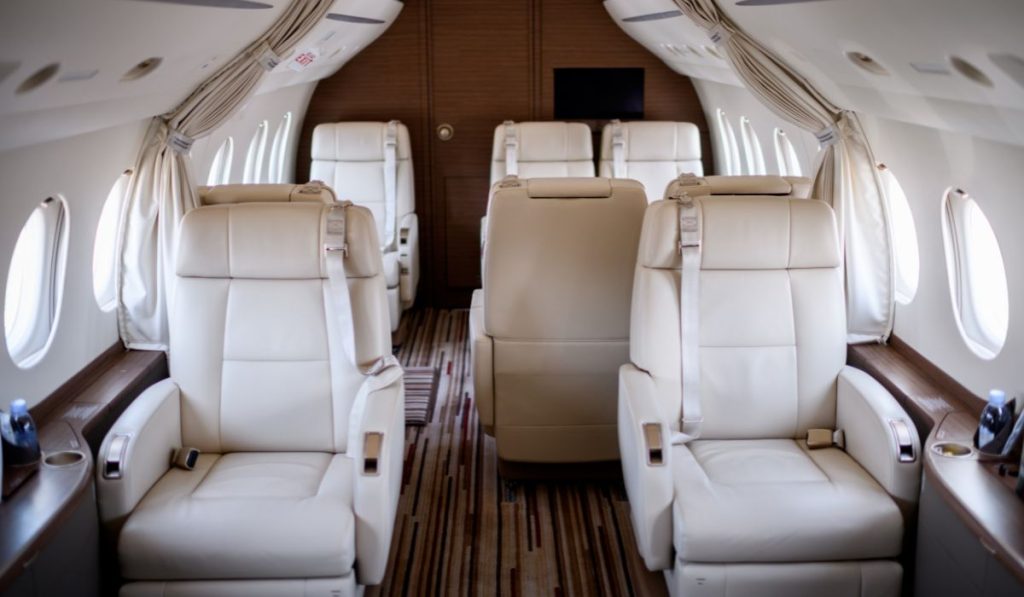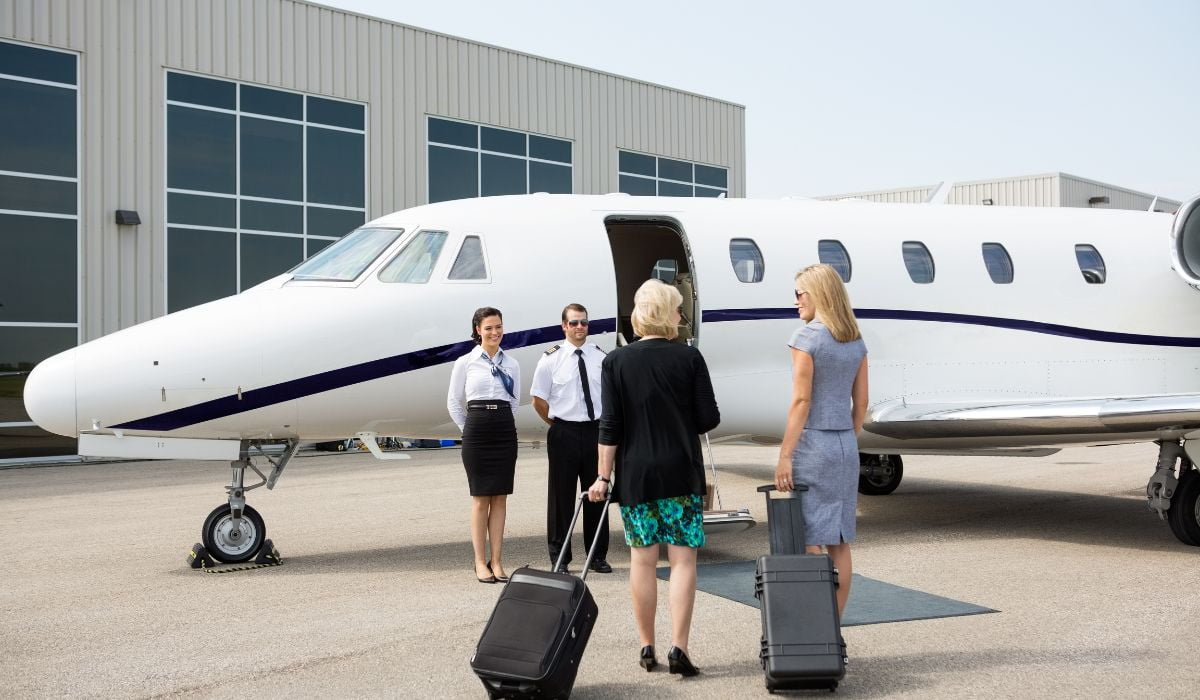How does private jet charter pricing work?
The private jet charter industry is a dynamic and complex market, influenced by various factors that directly impact the rates clients pay for their exclusive travel experiences. Understanding these factors is crucial for prospective customers as it allows them to make informed decisions when booking a private jet charter.
However, the cost of booking a private jet can vary significantly based on several factors – mainly a combination that covers aircraft type, flight details, demand, operational costs, and additional services. Passengers receive a quote from their trusted private aviation provider which considers several factors, including the specific aircraft type needed, the distance to be covered in the itinerary, and the chosen travel dates. Each of these elements has various subcategories that directly influence the pricing.
These subsections include aircraft operating costs, fuel surcharges, landing fees, taxes, as well as additional charges for amenities like in-flight catering and ground transportation services.
Factors impacting charter private jet rates
As with any significant expenditure, obtaining multiple quotes from reputable charter operators and comparing services can aid in finding the best value without compromising on safety and quality. Nevertheless, while there are many aspects impacting charter rates, overall cost transparency is a critical aspect of the puzzle, which ensures that clients have a clear understanding of the expenses associated with chartering a private jet. As private aviation providers cater to high-end clientele who expect a premium level of service, it is essential for them to maintain transparency in their pricing structures and provide clients with detailed breakdowns of costs.
1. Aircraft type:
One of the most significant factors affecting the cost of a private jet charter is the type of aircraft selected. Private jets come in various sizes and classes, ranging from light jets suitable for short distances and fewer passengers to heavy jets that can fly intercontinental routes and accommodate larger groups. The more luxurious and advanced the aircraft, the higher the charter rates are likely to be.
2. Distance and flight Time:
The distance to be traveled and the duration of the flight play a crucial role in determining the charter rates. Longer distances and extended flight times require more fuel, maintenance, and crew expenses, which are reflected in the overall cost. Additionally, some charter operators may charge a minimum flight time for short trips to cover operational costs effectively.
3. Empty leg availability:
An “empty leg” refers to the return portion of a one-way charter flight when the aircraft is empty. Charter operators often offer these empty-leg flights at discounted rates since they would otherwise be flying without passengers. If your travel plans are flexible and align with an empty leg’s timing and route, you can save significantly on the charter cost.

4. Seasonality:
Just like commercial airlines, private jet charter rates can be influenced by peak travel seasons and holidays. During busy periods, such as major events, vacations, and holidays, demand for private jets tends to rise, leading to higher prices. Booking well in advance or considering off-peak travel times can help mitigate the impact of seasonal rate fluctuations.
5. Airport landing fees:
Private jets incur landing fees at airports, which can vary significantly depending on the airport’s size, location, and traffic. Busier airports in popular destinations might have higher landing fees, and these costs can be passed on to the charter client.
6. Additional services:
Private jet charters often offer various additional services and amenities to enhance the passenger’s experience. These could include in-flight catering, ground transportation, Wi-Fi access, and specialized requests. Each of these add-ons can contribute to the final charter cost.
7. Crew and staff expenses:
The cost of operating a private jet includes salaries for the flight crew, maintenance technicians, and support staff. Charter rates need to cover these personnel expenses to ensure the safe and efficient operation of the aircraft.
8. Aircraft availability:
The basic law of supply and demand applies to the private jet charter industry as well. If there is limited availability of aircraft in a specific region or during a particular time, the demand may exceed the supply, resulting in higher charter rates.
What is the average operating cost of a private jet?
The average operating cost of a private jet can vary significantly depending on several factors, including the type and size of the aircraft, the distance traveled, and other operational expenses. Generally expressed as an hourly rate, private jet operating costs can range from $1,200 to $10,000 or more per hour.
For instance, light jets such as the Cessna Citation CJ3, Embraer Phenom 100, and Learjet 75, typically have average charter rates ranging from $2,000 to $4,000 per hour. For midsize jets like the Hawker 800XP, Cessna Citation Latitude, and Gulfstream G150, the average charter rate is usually between $3,500 to $7,000 per hour. Super-midsize jets, including the Challenger 300, Gulfstream G280, and Embraer Legacy 600, have average charter rates ranging from $4,500 to $9,000 per hour.
For heavier jets like the Gulfstream G450, Falcon 2000, and Global 6000, the average charter rate is generally between $6,000 to $12,000 per hour. Lastly, ultra-long-range jets, exemplified by the Gulfstream G650, Falcon 8X, and Global 7500, typically have average charter rates starting from $8,000 per hour and can go upwards of $15,000 or more per hour.
When considering the purchase of a private jet, it is essential to take into account various operating costs, including pilot wages, training expenses, insurance, and hangar rental. Additionally, potential buyers should factor in the recurring expenses for fuel and regular maintenance. Overall, owning a private jet can incur annual costs ranging from $500,000 to $2 million.
What additional costs impact private plane charter rates?
To the long list of costs that impact private plane rates, operators have to include fuel expenses, which represent a substantial portion of the operating costs and are influenced by market prices and the aircraft’s fuel efficiency. Regular maintenance and inspections are essential to ensure safety and performance, and these costs can vary based on the aircraft’s age and maintenance program.
The salaries of pilots, co-pilots, and flight attendants contribute significantly to the overall operating costs. Comprehensive insurance coverage is necessary for private jets, with insurance premiums adding to the expenses. Storing the aircraft in a hangar when not in use incurs additional costs. Charges for air traffic control services and communication expenses are factored into the operating costs. Additionally, onboard amenities and catering services add to the total operating cost.
It is essential to consider that the operating cost of a private jet can vary widely based on the aircraft’s age, model, manufacturer, and the specific operator’s pricing structure. Moreover, costs may differ between different regions and countries due to varying regulations and market conditions.
FAQs
How much does it cost to charter a 10-person jet?
On average, chartering a 10-person jet can cost anywhere from $5,000 to $15,000 or more per hour. Lighter and smaller jets may be on the lower end of this price range, while larger and more luxurious jets can be on the higher end. For instance, the Gulfstream G280 is a popular private jet that falls within the 10-person capacity range.
How much does it cost to charter a private 747?
Chartering a private Boeing 747 is an exclusive and high-end option. The cost of chartering a private 747 can vary significantly based on several factors, including the specific aircraft’s age, condition, customization, itinerary, and the level of luxury and amenities desired. The average charter cost for a private Boeing 747 is approximately $20,000 to $50,000 per hour.
Is it cheaper to fly private or first-class commercial?
The cost comparison between flying private and first class can vary widely depending on several factors, including the specific route, aircraft type, availability, and individual preferences. Flying first class on a commercial airline is more affordable than chartering a private jet. Yet when traveling with a larger group, the per-person cost of chartering a private jet may become more comparable to first-class tickets on a commercial airline.




